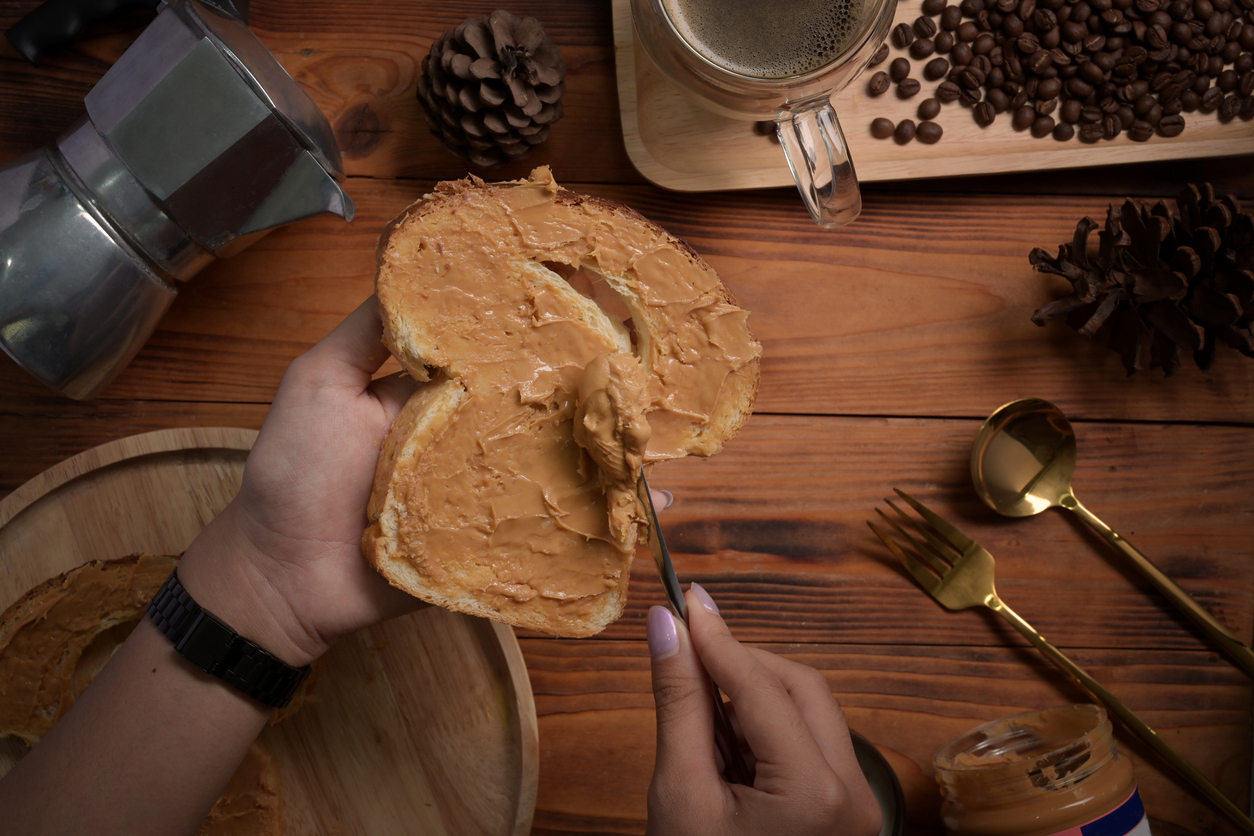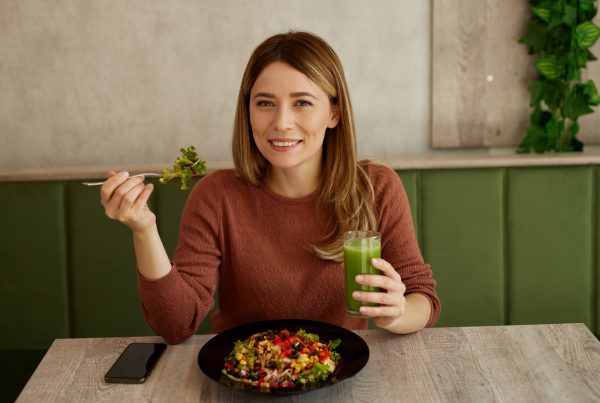Is peanut butter healthy? Dr Linia Patel (who loves peanut butter) explores the pros and cons of this popular food
High-quality peanut butter is typically made from just roasted peanuts, with a little salt sometimes added as a preservative. However, many lower-quality options include added sugar, vegetable oils (usually sunflower oil) and emulsifiers. Emulsifiers, and sometimes hydrogenated vegetable oils (trans fats), are added to keep the peanut oil from separating. While the science around emulsifiers is still evolving, we know that trans fats are strongly linked to an increased risk of chronic diseases like heart disease, type II diabetes and certain cancers. To avoid trans fats in your peanut butter, it’s essential to read the label carefully. While there are reduced-fat versions available, they often compensate for the lower fat content by adding more sugar.
Is peanut butter safe for everyone?
Unfortunately, peanut butter isn’t safe for everyone. My five-year-old nephew, for instance, has a peanut allergy, so I can’t offer him any when he visits. Peanuts are a common allergen and, for a small percentage of people, exposure can be life-threatening. It’s crucial for those with a peanut allergy to avoid peanut butter entirely and for everyone to check product labels carefully.
What’s the nutritional lowdown?
Peanuts provide a balanced mix of protein and carbs, with a higher percentage of energy coming from fats, making peanut butter quite calorie dense.
Here’s what you get in one tablespoon (18g) of unsweetened peanut butter:
- 111kcal
- 4.1g protein
- 9.3g fat
- 2.3g saturated fat
- 2.2g carbohydrates
- 1.1g sugars
- 1.2g fibre
Peanut butter is about 25% protein, making it an excellent plant-based protein source. However, it’s low in the essential amino acid methionine. Fortunately, when paired with other foods, peanut butter often complements this deficiency.
Because peanut butter is high in fats, it’s considered a calorie-rich food. About half of its fat content is oleic acid, a healthy monounsaturated fat also found in olive oil. Oleic acid is associated with several health benefits, including improved insulin sensitivity. The remaining fats are essential omega-6 fatty acids, such as linoleic acid. There’s some debate about the impact of omega-6 fats, with concerns that a high intake relative to omega-3s might increase inflammation and the risk of chronic diseases. However, this is still contested, and higher-quality studies indicate that linoleic acid doesn’t raise inflammation levels, challenging the notion that omega-6 fats are harmful.
Fibre might not be the first thing that comes to mind when you think of peanut butter, but it does contain a decent amount, particularly if made from peanuts with their skins still on. Peanut butter made with skins can provide about 1.3g of fibre per tablespoon, compared to 0.98g-1.1g from butter made without skins. However, given its high calorie density, the fibre contribution from peanut butter is somewhat limited.
Peanuts are also a good source of several micronutrients – vitamins and minerals. An ounce offers small to moderate amounts of B vitamins (except B12), vitamin E, calcium, iron, magnesium, potassium, selenium and zinc, all of which are essential for good health and can nicely complement your overall nutrient intake.
You might not expect peanuts to be rich in antioxidants, but they contain a diverse range. Among them is resveratrol, the same antioxidant found in red wine, which is linked to a lower risk of heart disease and cancer. Another is p-coumaric acid, which helps protect tissues from damage and has anti-inflammatory properties.
Aflatoxins in peanuts
Peanuts can sometimes be contaminated with mould that produces aflatoxin, a toxin harmful to the liver. While aflatoxin poisoning is rare because it requires consuming a large amount, eating peanuts frequently could expose you to repeated low doses. Although these small amounts might not cause immediate symptoms, they are associated with an increased risk of liver cancer. The mould that produces aflatoxins thrives in hot, humid climates, so peanuts grown in the US or Australia are generally safer, while those from some African and Asian countries tend to have higher levels. Both organic and non-organic peanuts can be contaminated, and sometimes organic peanuts may have even higher levels. The tricky part is that contamination can occur randomly – one jar of peanut butter might have high aflatoxin levels while another from the same batch might not.
While this information might make you wary of peanut butter, it’s important to note that the situation isn’t as dire as it seems. In the UK and EU, there are strict regulations in place to protect consumers. If you eat a lot of peanuts and are concerned about aflatoxins, it’s a good idea to check the country of origin or contact your favourite brand for more information.
How much should I eat?
If you’re not allergic to peanuts and enjoy their taste, a moderate amount – about two tablespoons a day – can be a healthy part of a varied, balanced diet.
Take-home message
Peanut butter has many benefits, but there are also a few things to watch out for. For those who love peanut butter, it’s rich in nutrients and a good source of protein. It also contains fibre, vitamins and minerals, although the high calorie content might offset these benefits to some extent. Enjoying peanut butter in moderation is perfectly fine but be mindful – it’s easy to overindulge because it’s so delicious and hard to resist!
References
- Evers H (2016), Peanut butter, Human Reproduction, 31(10).
- Di Nicolantonio J et al (2018), Importance of maintaining a low omega-6-omega-3 ratio for reducing inflammation, Open Heart, 5(2): e000946.
- Su et al (2020), Dietary linoleic acid intake and blood inflammatory markers: A systematic review and meta-analysis of randomized controlled trials, J Clin Med., 20(8): 3,091-3,103.
- Lopez-Gomez C et al (2020), Oleic Acid Protects Against Insulin Resistance by Regulating the Genes Related to the PI3K Signalling Pathway, J Clin Med., 9(8): 2,615.
- Sithole et al (2022), Peanut butter food safety concerns – prevalence, mitigation and control of Salmonella spp and Aflatoxins in peanut butter, Foods, 11(13): 1,874.
Explore more about healthy eating in this FitPro blog








